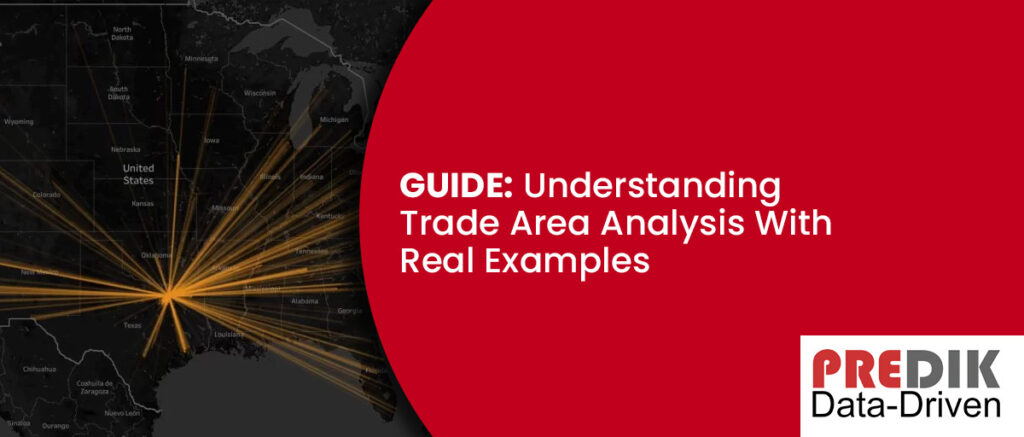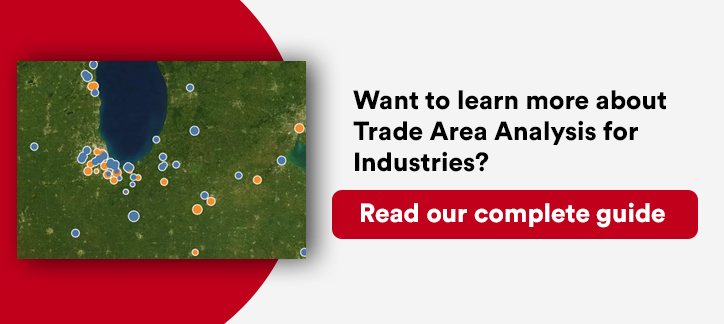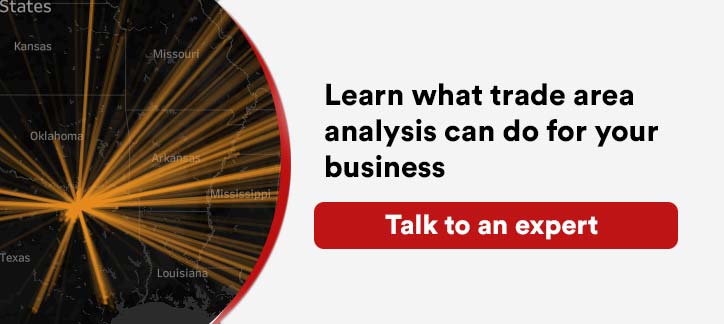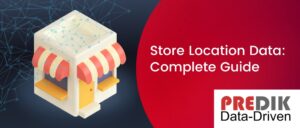Recently, companies have been looking to understand if their sales points, offices, subsidiaries, and warehouses will succeed or fail in a particular location area even before placing them.
Of course, many factors need to be considered. Some can be easily identifiable, like a competitor’s presence. Others, not so much, like the cross-company relationships between businesses inside an area.
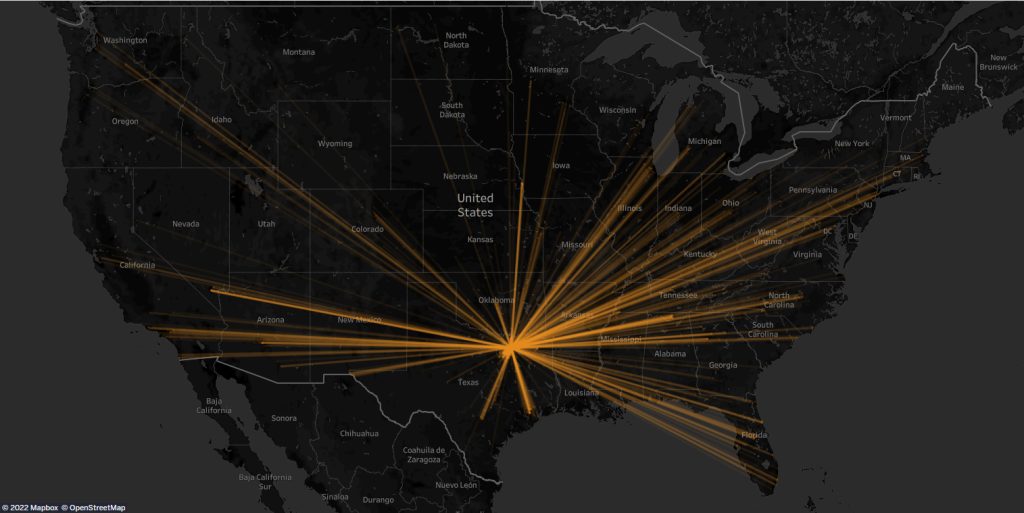
That’s why decision-makers use trade area analysis to secure their investment and the success of their expansion and relocation strategies.
“Defining a downtown or business district’s trade area is an important first step in any market analysis. This step is crucial because it defines approximate boundaries that will serve as the basis for further study.
Community Economic Development
We want you to get a better understanding of the subject, so in this article we’ll cover the following topics:
- What is a trade area?
- Trade Area Analysis Methods: How Do They Work?
- Tools for Conducting Trade Area Analysis
- Why is Trade Area Analysis so important for businesses and companies?
- The role of a Point of Interest (POI) in TAA
- What is a “Relationships Map”?
- Case Study: Exploring an Amazon Warehouse
- The Evolution of Trade Area Analysis
- Final Thoughts
- How can you use Trade Area Analysis to improve your business strategies?
What is a trade area?
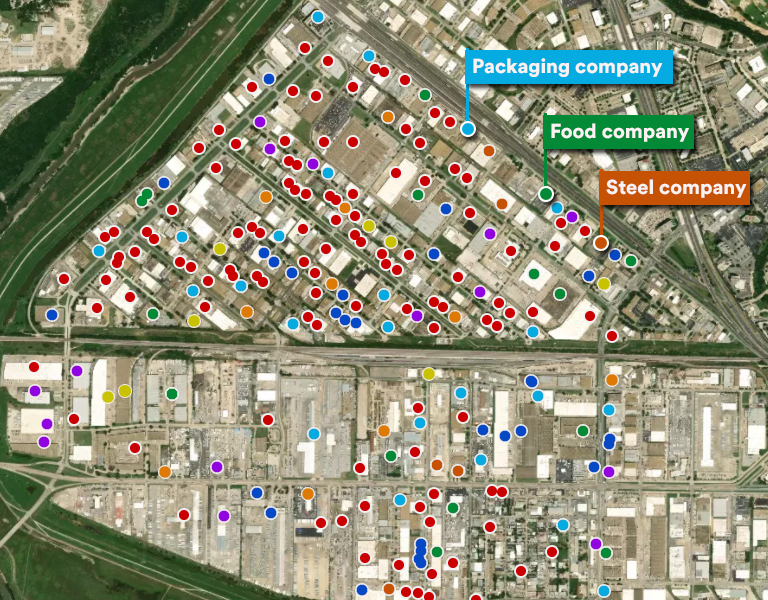
Trade Area Analysis (TAA) consists of analyzing a specific area to understand all the business and commercial activities. This includes companies, competitors, and users.
TAA is a crucial technique used in location data analytics. It establish the geographical or demographic area where a store or shopping center will attract the biggest volume of potential customers.
It’s the key to understanding where your customers are coming from and the factors influencing their shopping decisions.
Also, it helps determine a strategic placement of new offices, branches, production plants, subsidiaries, and warehouses. That is why, it helps make processes more efficient and productive between suppliers, distributors, and the company’s internal logistics.
Trade Area Analysis Methods: How Do They Work?
Trade Area Analysis uses geolocation data to analyze an area from different angles and perspectives. This is how a company can determine if a location represents a good fit for a business strategy.
TAA is one of the easiest and most precise ways to understand an area’s market potential. Decision-makers can better understand their consumer and competitor behavior and their logistic advantages and disadvantages.
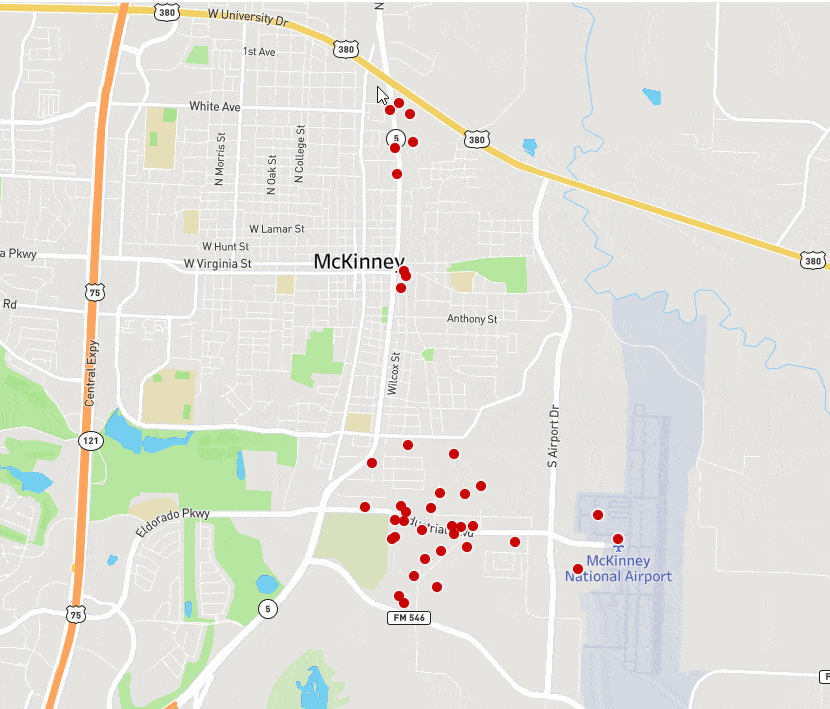
Using an interactive map, you can make an in-depth exploration of the area’s businesses and collect valuable insights to:
- Classify all the companies’ profiles.
- Forecast demand
- Plan and structure an effective supply chain strategy.
- Get accurate information about a facility.
Tools for Conducting Trade Area Analysis
There are different analysis tools available today that help in effective trade area analysis. These tools offer real-time data and visual analytics. They can also process large datasets, ensuring a more comprehensive and accurate analysis.
Geographic Information System (GIS) in Trade Area Analysis
GIS provides a powerful tool for conducting Trade Area Analysis. It effectively maps out demographic data and driving time metrics. Also, GIS visually represents a trade area and assists in examining the surrounding competitive environment.
Entity Profiling in Trade Area Analysis
Entity profiling involves using data analytics to understand the demographic and behavioral characteristics of a customer, partner, distributor, or supplier. This information helps predict important behavioral patterns and define potential opportunities.
Why is Trade Area Analysis so important for businesses and companies?
TAA is critical in retail, fast-food, and real estate data analytics. Why? It offers insights that influence decisions on store location, site selection, supply chain management, and retail stores’ performance evaluation.
Also, it helps businesses analyze market potential and strategize to maximize returns from potential locations.
Trade Area Analysis for Real Estate
Trade Area Analysis provides valuable insights for location intelligence and site selection strategies.
For example, by understanding shopping patterns, investors can effectively analyze market potential and identify the best locations for real estate investment.
Use case: A Real Estate firm can use TAA to decide on a new location for a high-end residential complex. Using GIS and customer profiling, they can identify a site with a high concentration of their target demographic. The result: A significant return on investment.
Trade Area Analysis in Retail
Trade area analysis is crucial for:
- Understanding the market.
- Optimizing the supply chain.
- Ensuring the store location aligns with the customer base.
Overall, these insights helps retail businesses identify their core customers and strategize accordingly.
Use case: Our client, a popular clothing retailer, used TAA to plan their expansion. By analyzing trade areas, they discovered new potential locations with similar demographic profiles to their existing successful stores. The result: A booming strategy for their store openings.
Trade Area Analysis for Industrial Companies
Trade Area Analysis is equally essential for industrial companies as it is for retail or real estate businesses. Here’s why:
1. Site Selection: When planning to build a new factory or warehouse, TAA can help determine the best location. It allows an industrial company to understand the demographics, infrastructure, transportation facilities, and proximity to suppliers and customers in potential areas. These insights are key in optimizing supply chain operations and reducing costs.
2. Labor Market Analysis: Trade area analysis can help analyze the labor market. How? By identifying areas with a high concentration of qualified workers. This allows industries to avoid labor shortages and high recruitment costs.
3. Market Potential and Competition Analysis: For companies like automobile manufacturers or furniture makers, it can help identify potential customer bases. It can also help analyze the market competition. Likewise, TAA provides clues into consumer demographics, preferences, and buying behaviors within a specific area.
4. Expansion Planning: When considering expansion, trade area analysis can identify promising new markets based on demand, workforce availability, and logistical considerations. TAA tools helps make informed decisions about where to expand production or open new distribution centers.
5. Supply Chain Optimization: TAA solutions can help determine optimal locations for distribution centers or warehouses. This can ensure efficient customer delivery. Analyzing Trade Areas regarding transportation and logistics can lead to more efficient supply chain management, reducing costs and improving customer satisfaction.
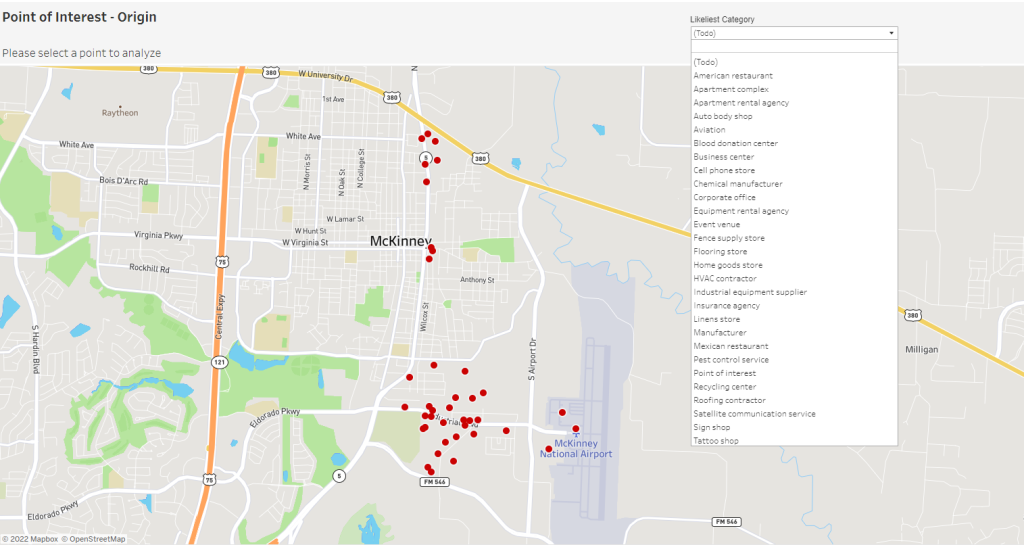
The role of a Point of Interest (POI) in TAA
TAA not only gives you a general picture of all the business connections in a selected area but also brings a detailed report of each company on the map. These company reports are what we call POIs analysis.
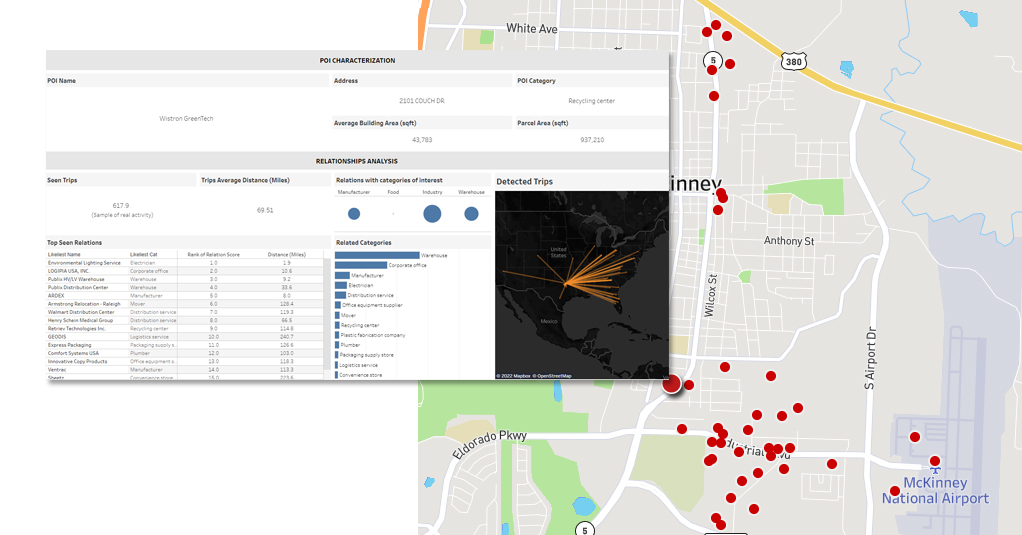
Points of interest are specific geographic point locations, and their analysis can help identify competitors and potential business alliances within an area.
Some insights you can get from another company using POI analysis are:
- Facility size area.
- Main business relationships categories.
- Company´s business ecosystem.
- “Detected trips map.”
What is a “Relationships Map”?
One of the most valuable insights a POIs analysis can bring is what we call “Relationships Map.”
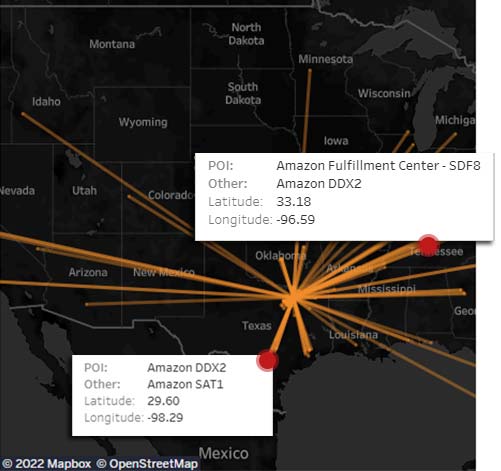
These maps show a company’s business relationships outside its trade area and inside the US. In the example, we can see an Amazon warehouse and its connections with other company facilities around the country.
Case Study: Exploring an Amazon Warehouse

This is an example of a POIs analysis report . As we can see, this Amazon’s warehouse:
- Registers 2,096 monthly trips.
- Has business relations with five other Amazon facilities (Mainly with another Amazon Warehouse in Houston).
- Has strong business connections with three major private companies: Wistron GreenTech (Recycling center), Kens Food Inc (Distributary), and Allsafe Self-Storage (Self-storage facility).
The Evolution of Trade Area Analysis
Trade area analysis has evolved significantly from manual accounting to sophisticated GIS and data analytics techniques. With technological advancements, especially in Big Data, AI and Machine learning, the future holds even more potential for precise and insightful analysis.
Final Thoughts
The ability to analyze market potential, understand customer behavior, and make informed decisions about site selection and location is crucial in today’s competitive business landscape.
As we move towards an even more data-driven future, embracing advanced techniques in TAA will be essential for businesses looking to gain a competitive edge and achieve success in their respective industries.
How can you use Trade Area Analysis to improve your business strategies?
At PREDIK Data-Driven, we have developed Trade Area Analysis tools with an exact methodology that allows us to:
1) Identify and collect all the sources of information that are needed.
2) Evaluate and analyze each data piece from all the business entities within an area.
3) Visualize all the POIs and their business connections.
Let us help you make better decisions through reliable and complete data. We have more than 14 years working with top companies like Adidas, Panasonic, Shell and Michellin.

